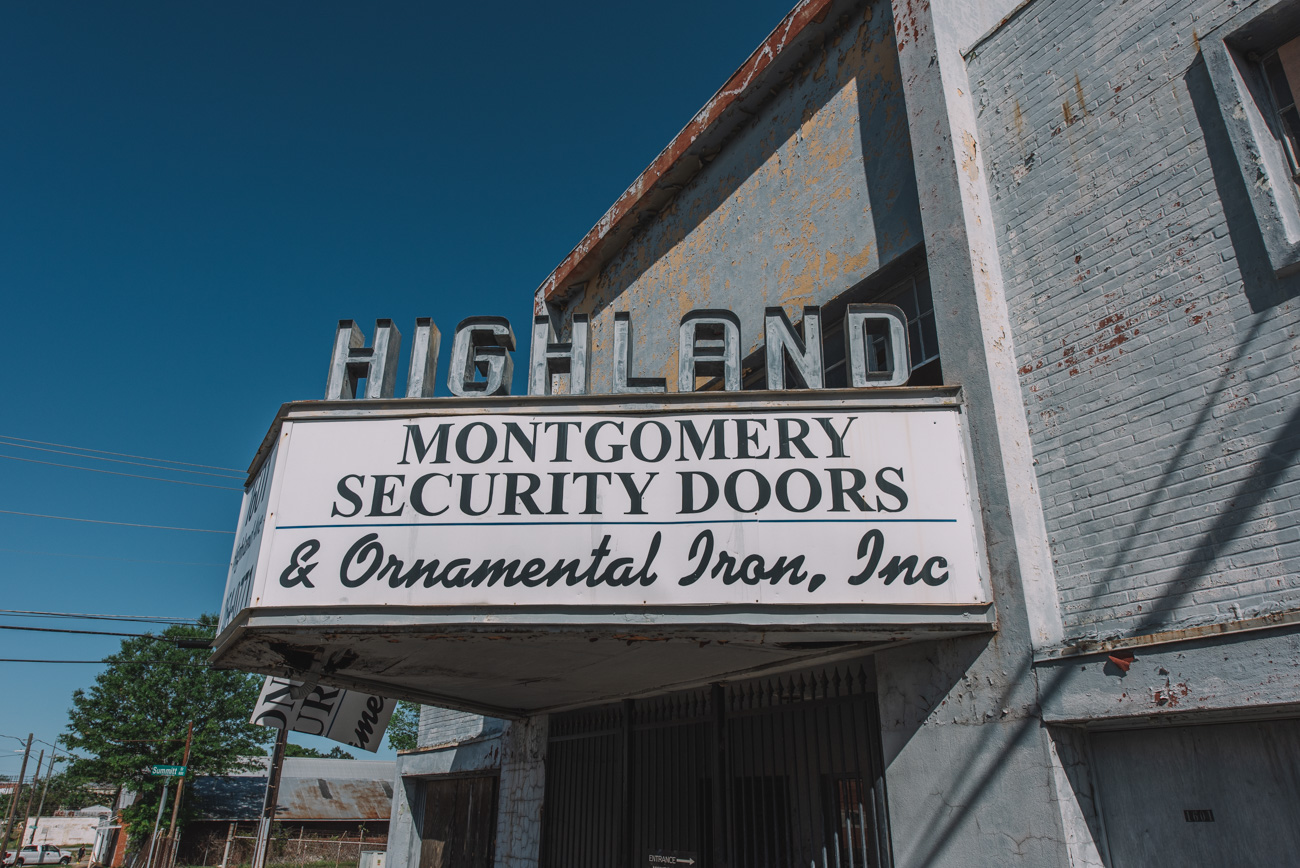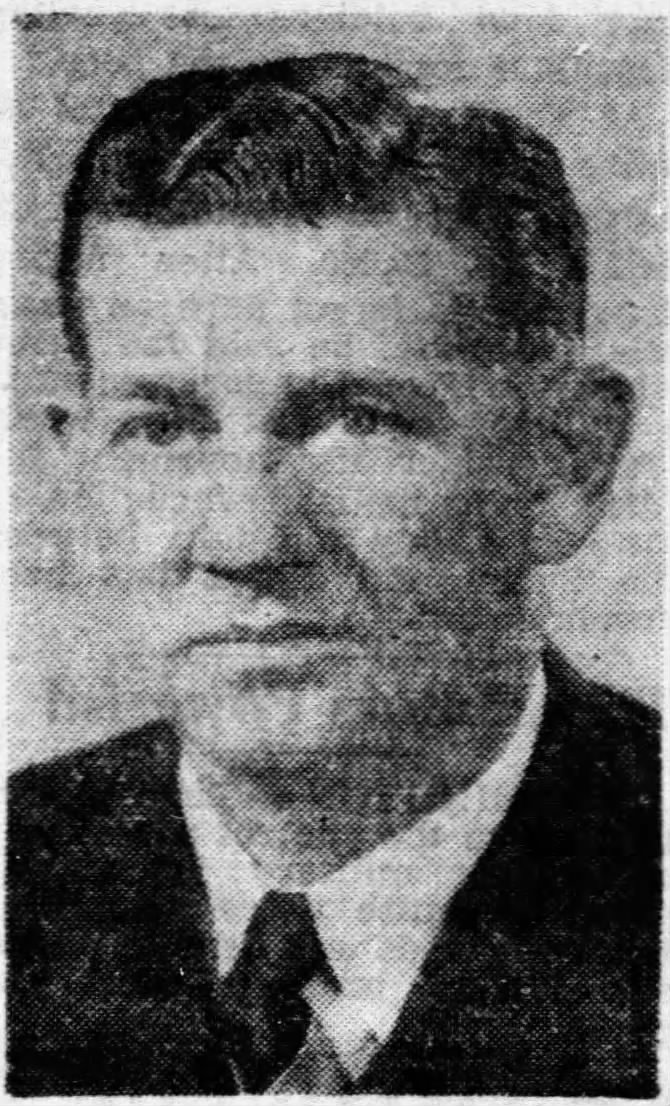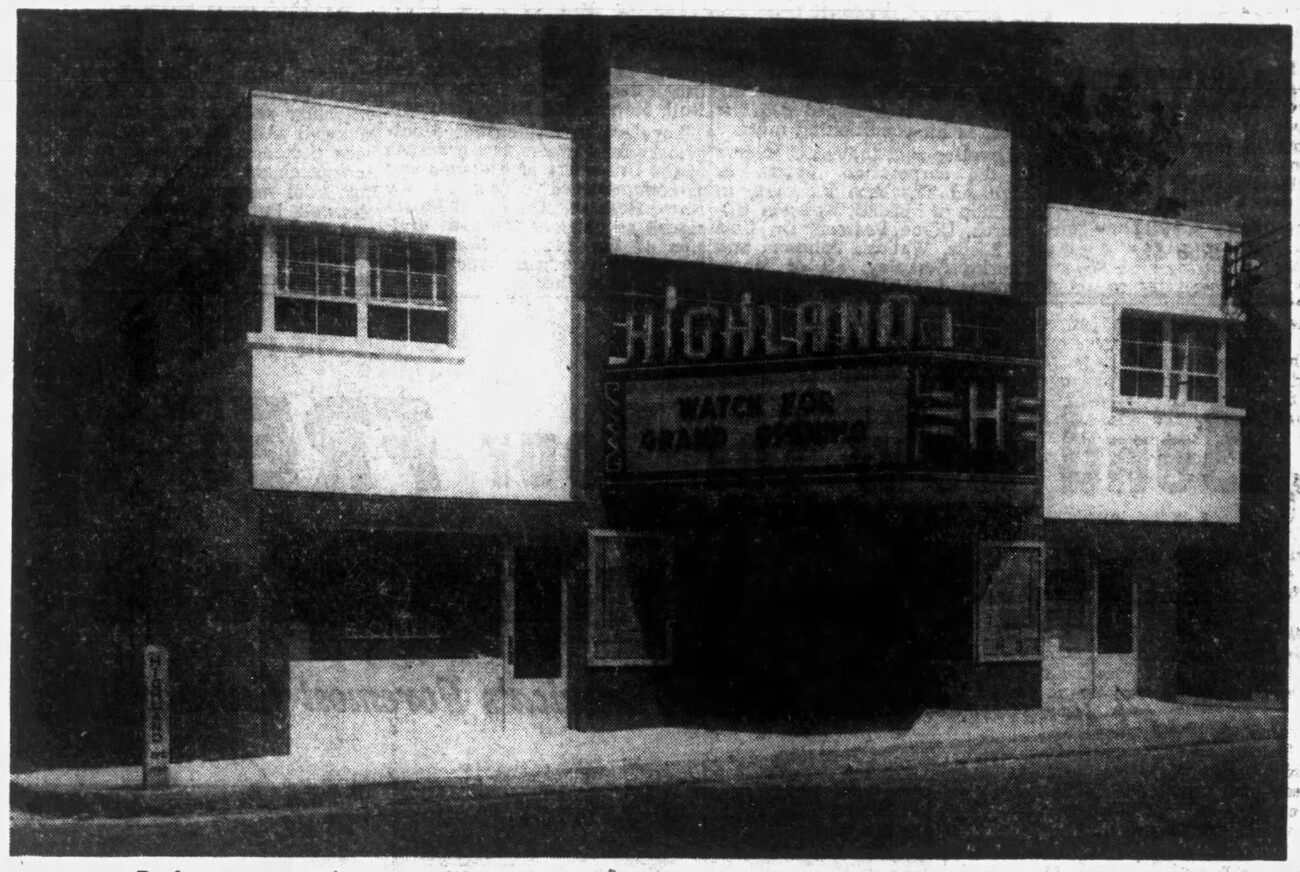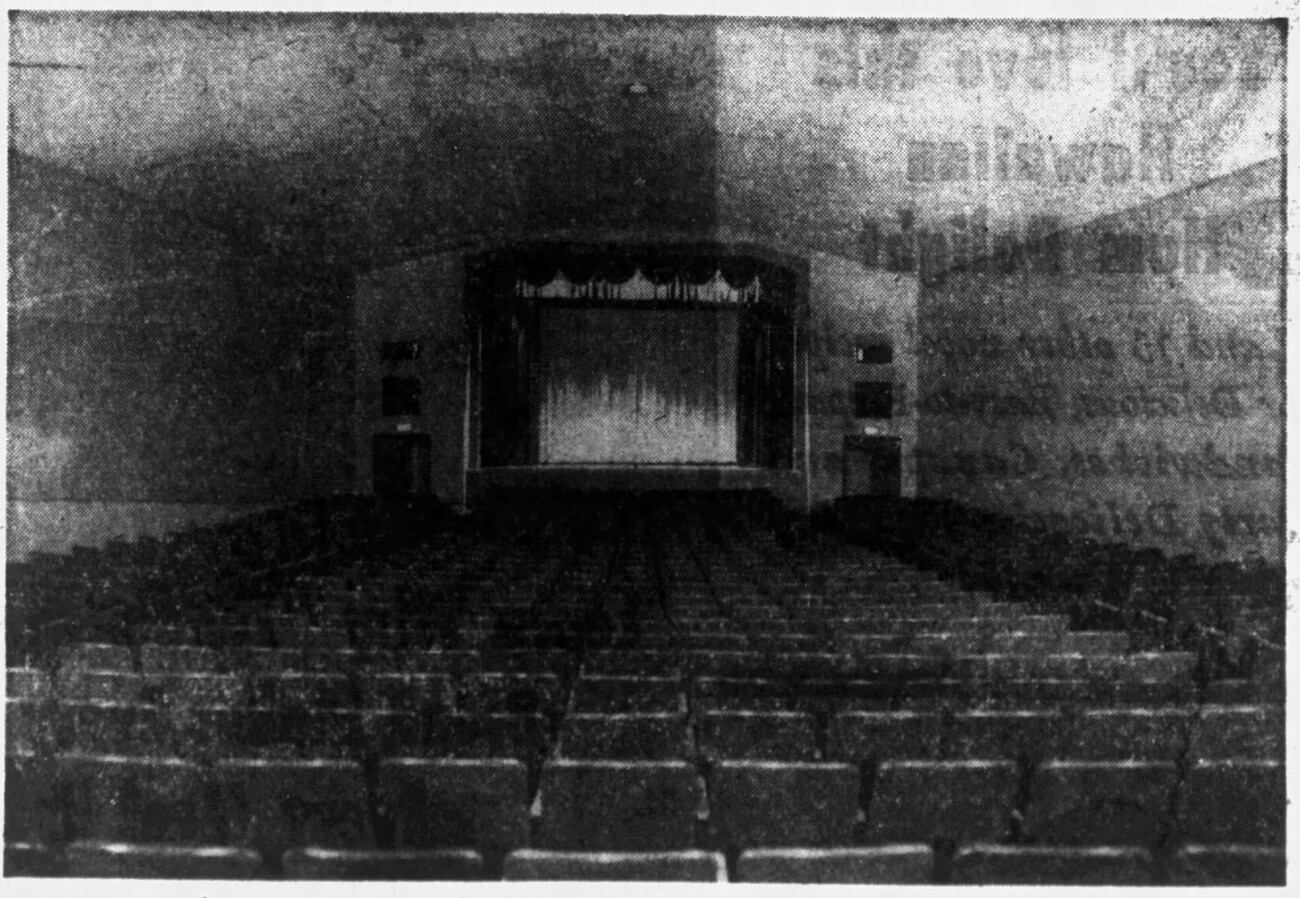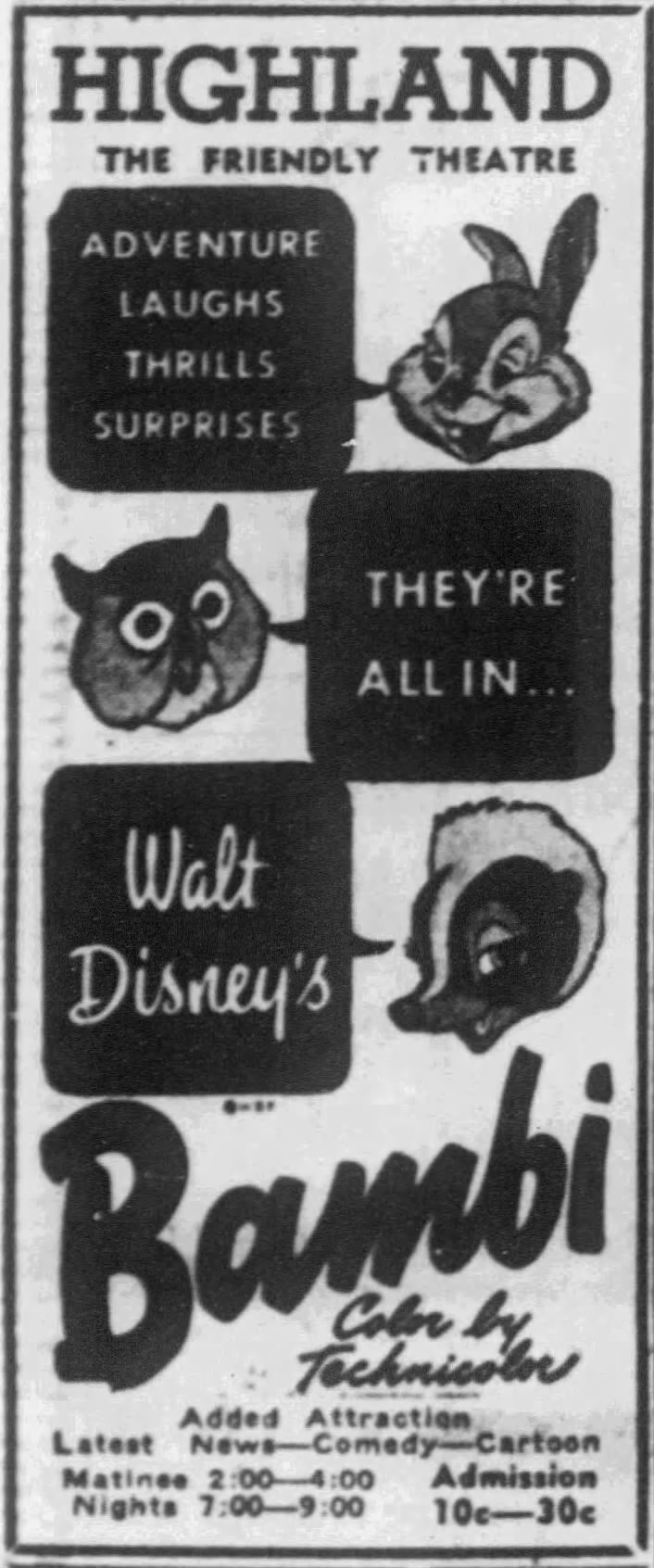| City/Town: • Montgomery |
| Location Class: • Theatrical |
| Built: • 1948 | Abandoned: • c. 2018 |
| Status: • Abandoned |
| Photojournalist: • David Bulit |
Table of Contents
The Highland Theatre located on Highland Avenue in Montgomery, Alabama, was designed and built in the late-1940s by some of the city’s most prominent architects and businessmen.
W. Y. Lovelace
William Yancy “Yank” Lovelace was born on September 4, 1905, in Brewton, Alabama, the son of Edwin Marshall Lovelace and Frances Flourney “Fannie” McKenzie. W. Y. Lovelace’s father was a former Alabama Senator who made his fortune through many business ventures. He was president of the Lovelace Lumber Company; director and a large stockholder in the Bank of Brewton; interested in the Rogers Mercantile Company and Brewton Iron Works; associated with the Keego Brick Company and the Strong Veneer Company.
From 1936 to 1946, W. Y. Lovelace served with the Farmers Home Administration, and at the time of his resignation, he was in charge of the Production Loan Program. He served actively in the U. S. Navy for three years during World War II. On September 29, 1952, Lovelace died at the age of 47 after suffering a heart attack at his home at 3309 Lebron Road in Montgomery. At the time of his death, he was a Lieutenant Commander of the U. S. Navy Reserve, a member of the Kiwanis Club and First Methodist Church, and had served as a division chairman of the Community Chest.
In 1947, Lovelace acquired the Rogers Theatre at 39 Commerce Street in downtown Montgomery, the first of many theaters he would become associated with. The Rogers originally opened as the Capitol Theatre on September 3, 1926. It closed in 1928 and reopened as the Tivoli Theatre on December 16, 1928, with Clara Bow in Parisian Love (1925). It continued with this name, operated by Paramount Pictures Inc. through their subsidiary Wilby-Kincey until early-1947. On January 12, 1947, it was renamed Rogers Theatre and continued until it closed in 1956.
Highland, “The Friendly Theatre”
Lovelace had the Highland Theatre built in 1948 on the corner of Highland Avenue and Summit Street featuring a seating capacity of 700. The building was designed by architects Pearson & Tittle who worked on the award-winning Grove Apartment Apartments the previous year which, like the Highland, was also constructed entirely of steel and concrete. The contractor was the prominent W. K. Upchurch Construction Company of Montgomery.
In the September 29, 1948 issue of the Alabama Journal, the theater’s vestibule was described as being floored with terrazzo and the foyer as “resplendent with indirect cove lighting in blended colors. Large windows looking into the auditorium proper are fitted with leather-padded standing rails so that those waiting to enter the room may watch the movie in comfort. Also in the foyer are adults’ and children’s drinking fountains and padded leather entrance doors. The red leather seats in the auditorium are on flooring of asphalt tile over solid concrete. The asphalt tile, according to Lovelace, is washable and soundless.
The auditorium is indirectly lighted from the rear. Emergency lights operating from a gasoline generator are available to provide lighting in case of power failure. The entire building is walled with acoustic tile and the ceilings are done in acoustic plastic. The movie screen is draped in blue curtains, topped by a gold-trimmed valance. There is no balcony. Carpeting throughout the building is in colors of gold, grey, and wine woven into a modernistic design, and the theater, according to Lovelace, is equipped with the latest in air-conditioning units.”
The theatre opened on September 30, 1948, featuring Mickey (1948), a coming-of-age comedy-drama film about a young red-headed tomboy named Mickey with a beautiful singing voice, who is torn between singing and playing on her baseball team while she also plays matchmaker for her widower father and a next-door neighbor. Like the Rogers, the Highland closed in 1956.
During and after its operating years, spaces on the ground floor facing Highland Avenue were reserved for various businesses, the first of which being Highland Jewelers and Parker’s Sno-white Laundry. At the time of the theater’s opening, the area was on the rise. Across from the theater were three large grocery stores, a large furniture store, and a bakery. Around the corner on Forest Avenue were another furniture store, a dry cleaning business, a barbershop, and a self-service laundry, as well as the new Forest Avenue Methodist Church which opened the previous year.
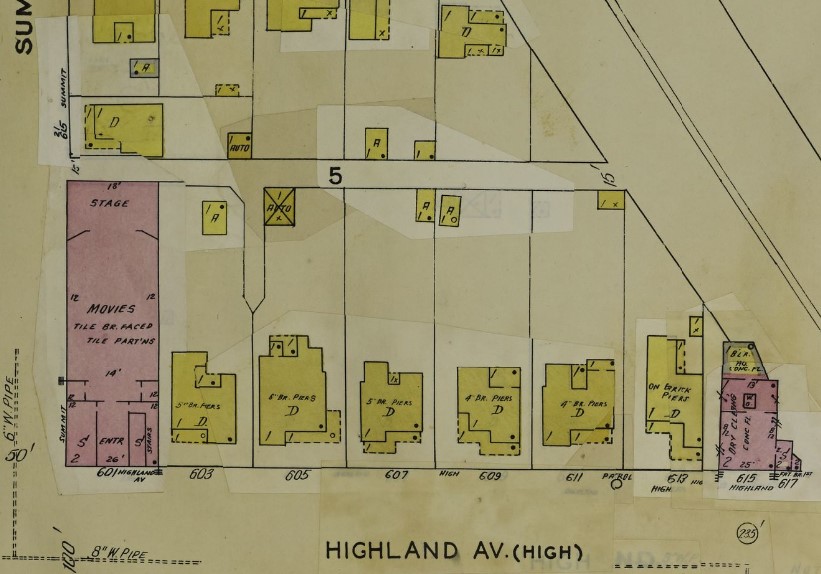
The Murder of Eula Mae Dawson
After its closure, the Highland reopened as the Highland Roller Rink on the ground floor and the office of dentist R. L. Boyd on the second floor. The roller rink operated until the 1980s when it became the Highland Avenue Church of Christ. Operating on the ground floor of the Highland Roller Rink was the Little Shirt Shop managed by Eula Mae Dawson.
Eula Mae Dawson was born on May 23, 1913, in Pike County, Alabama, the daughter of George and Della Dease Williams. She had three brothers and three brothers. Their mother became very ill when she was nine years old. The family lived on a farm, and Eula Mae took over the household tasks as the oldest girl. She attended Pike County public schools and later completed Home Bible Courses, enabling her to teach and preach. She married Joe C. Dawson, a building contractor, and the two had a son who worked with his father in the contracting business.
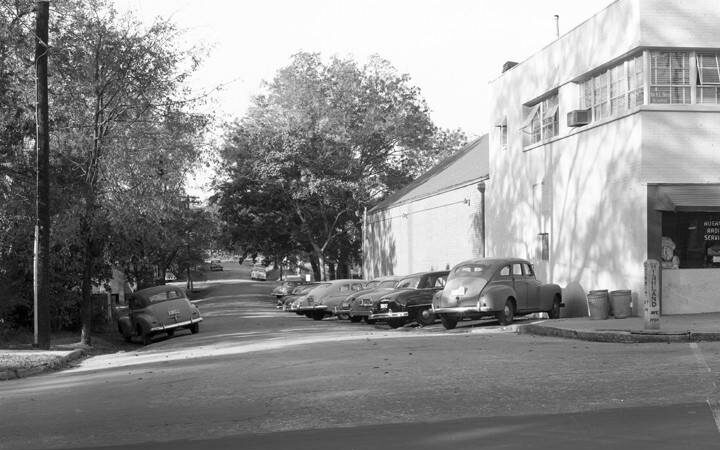
In 1957, Eula Mae and her husband moved to a small, blue-gray frame house on Summit Street behind the old Highland Theatre building. She worked as a tailor and seamstress at a shop in Cloverdale and later at the Little Shirt Shop before opening her own business, Dawson Shirt Shop, where she made alterations, sold candy, and gave religious lessons. She ran the shop inside her house.
On April 8, 1992, Jerry Youngblood, 20, and his 19-year-old brother Reginald Toles broke into the Dawsons’ home to rob the business when Eula Mae Dawson was killed. In the trial, Youngblood admitted to shooting her with her own gun, which she drew in self-defense. She and Youngblood fought over the weapon when Youngblood shot her. Both men are currently serving life sentences in prison.
Abandonment
In the late-1980s, the former Highland Theatre’s main tenant was Skelton’s Lock and Key Service, Locksmith along with a State Farm Insurance office and a beauty salon. By the mid-1990s, the building’s sole occupant was Montgomery Security Doors and Ornamental Iron which operated until around 2018. The building has sat vacant ever since. Much of the facade remains unchanged although it is unknown if the marquee remains intact.
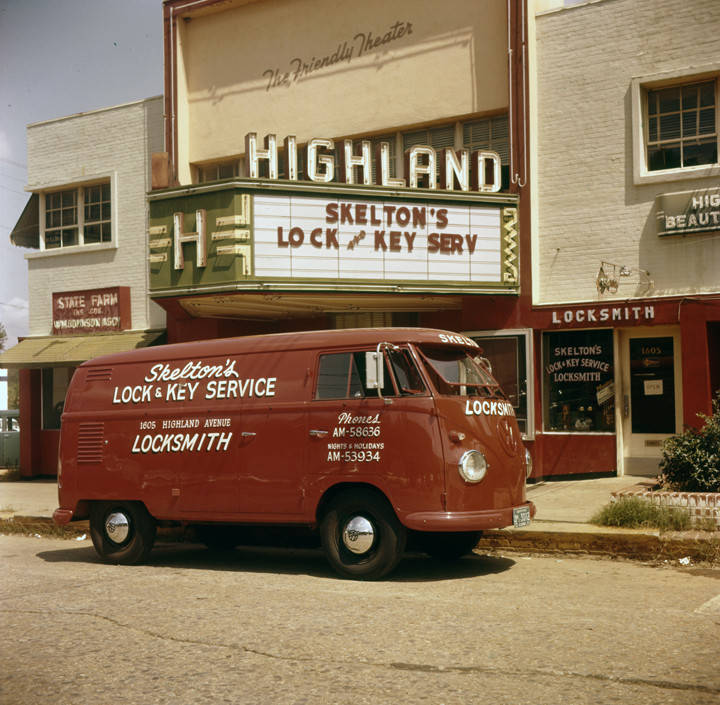
Photo Gallery
References
Alabama Journal; Kate Harris. (September 29, 1948 p. 14). Oak Park Area Movie Has 700 Seating Capacity

